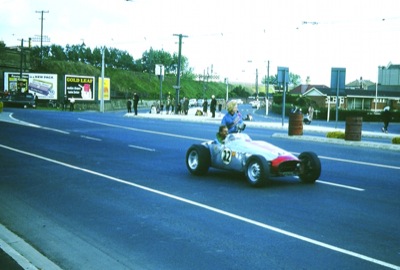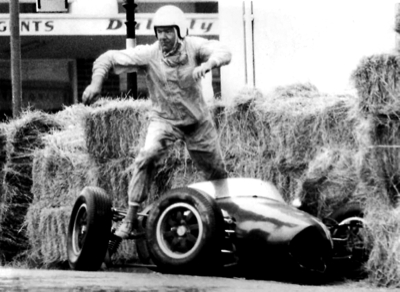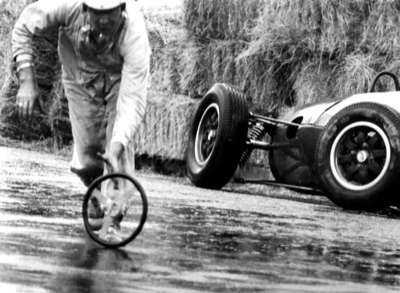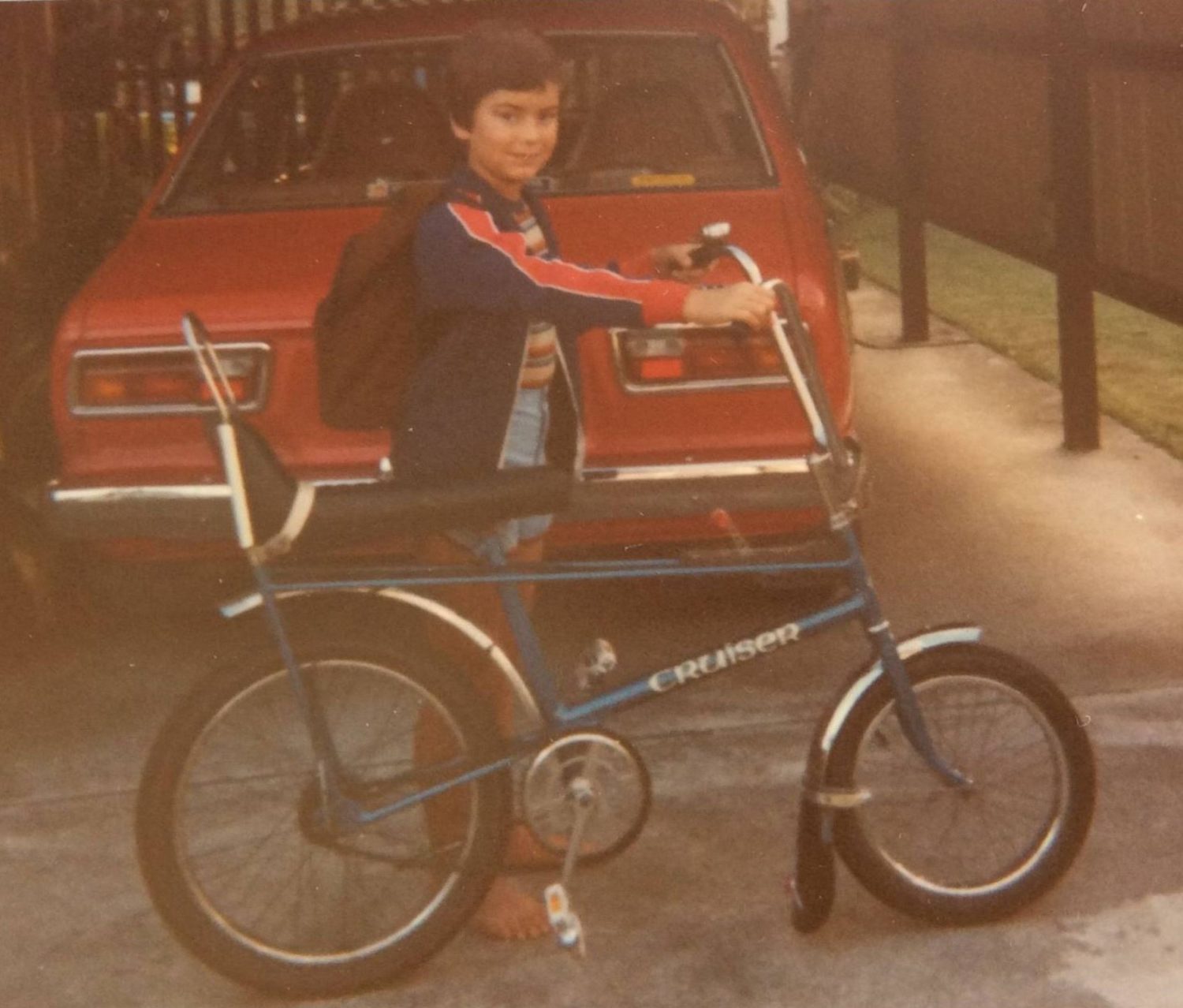It this age of sterility, it’s difficult to imagine the sense of anticipation there used to be leading up to the first race meeting of each season. Were all of the between-season rumours true? Had Scott Jacobsen really imported a new Shelby Mustang, how was Johnny Black going to go? He was the kid who had raced a Daimler SP250 so brilliantly last season and stepped straight into the ex Rod Riley’s 2.5 Brabham Climax. Were the rumours right that Jimmy Wilson had plugged a 7.0 litre side-oiler Ford V8 into an Anglia, who was the mystery owner of the Lotus that Jim Clark had won the world championship in?
Was Wilson Owen’s new 250LM Ferrari going to arrive in New Zealand in time?
For months the rumour and fact mills had been working overtime and had reached a fever pitch. We had to be at Renwick in early November for the first race meeting of the season.
Well, that’s the way I remember it. In truth though, life went on in an ordinary, humdrum way outside motor racing circles. Blokes in pubs sucked on rolies, slugged back a beer and talked rugby. Or sheilas. Or both.
Motor racing was largely ignored by the media. The mainstream journalists reckoned it belonged to the sports department, but the sports hacks couldn’t understand it and stayed focused on rugby. Unless someone was hurt, or killed. So, in that regard, nothing has changed.
But at least, back in those days there was a specialist motorsport press to spread the news, fan the fires of imagination and whip up expectation for the season ahead and we were all aquiver with anticipation.
In those days, the Marlborough Car Club organised the opening national championship meeting of the season on the roads and streets through Renwick, the small town on the outskirts of Blenheim. Drive around those roads and streets today and imagine the Armco strangled, hotmix circuits of today and you’d wonder how they did it. They did it with haybales, binder twine and white coats.
Haybales to protect power poles from damage by an out-of-control- racing car and binder twine to keep the spectators back the five or six feet from the edge of the track that was thought to be needed for crowd control.
White coats were like Superman suits, they changed warm, wonderful human beings into snarling Rottweilers.
Weeks before the due date, you’d write a letter to the motel you had stayed in last year, but change your name in case they remembered that it was you who had started up the concrete mixer at the building site next door at 2:30 in the morning. But not before filling it up with empty beer bottles.
So, with accommodation booked for the Friday and the Saturday nights, you packed your bags and headed off on that long drive to Blenheim.
Unless you lived in Blenheim it was always a long drive — competitors and fans descended on Blenheim from North Cape to Bluff. There was a sense of expectation and occasion.
Some competitors actually drove their cars to circuits in those days, but some were carried on trailers. Even Formula One cars in those days travelled on small, open trailers and they were tied on with lengths of oily rope. Sometimes they fell off and created mayhem among the following traffic.
Some wealthy North Island competitors flew their cars across Cook Straight in those great lumbering devices called 40,000 Rivets Flying in Close Formation — the incredibly ugly Bristol Frightener. Most used the good ship Aramoana — the first roll-on, roll-off ferry.
One year, we drove up from Dunedin — it was probably in my brother’s Humber 80. We checked into our motel where I almost gave the game away by using my real name instead of the fictitious name I‘d used in my letter. There was a team of eight of us and we had a huge unit that slept us all.
Blenheim was motor racing city. The locals were out in force in their Austin A30s, Morris Minors, Ford Tens and Ford Twinspinners, all with mufflers off, tyres howling, putting on a show for the visiting racing drivers. There was a sense of adventure and excitement in the air.
After scutineering, the racing cars went on display in a big new car showroom and we went there to have a mooch and here we confirmed, or denied, some of the rumours.
Then someone said more competitors were arriving in Picton on the 10:30 pm sailing, so off to Picton we went.
We stood at the foot of the gangway as the racing cars poured out — most were on trailers. There was a constant stream, of them and then from the bowels of the ship came this awful rattle, clatter and bellow.
Out of the gloom emerged two tiny yellow headlights followed by this polished alloy bulk —the world famous Lycoming with Jim Boyd driving. We sort of knew him — he saw us and his face creased up into that famous Jim Boyd smile. His smile was so wide the parking area lit up like a neon sign.
“Hi boys, where are you staying, got room for me?”
We were all so excited at the thought of having a famous racing driver staying with us that we never gave it a thought that he hardly knew us.
That was the Jim Boyd way of doing things — getting by on charm.
He followed us back over the hill to Blenheim where I drew the short straw and had to top and tail with him in a single bed. I was so impressed that I gave him the pillow end.
Jim Boyd used the Lycoming on the road — “It’s the most fabulous car on the road you could imagine,” he said. “It’s got all that power and torque and it will outrun anything. . .”
There was a small panel in the shapely polished alloy boot that I am sure was held in place by those Dzus fasteners that were all the go in that era. Jim undid the fasteners and withdrew from the small boot a suitcase about the size of a lunch box. In this. Carefully packed and folded, were his clean clothes — including a white shirt, tie, suit and shinty black shoes.
It was a miracle of packaging. Firstly I was amazed he got the suitcase into the boot and I was even more impressed at what he got into the suitcase.
Hew flicked the suit and shirt straight and hung them up so they’d be straight for the big do, after-match function, on the Saturday night.
Then a bit of a yarn and he went to bed — my bed.
He was up before all of us the next morning, into his blue Dunlop racing suit and out into the Lycoming to bellow off to late scrutineering.
In those days, Friday saw the circuit being set up, Saturday morning was late scrutineering and practice and the rest of the day was for racing. Saturday night was given over to drinking.
I think that Geoff Mardon and Barry Porter consigned Jim Boyd to third place in the sports car races that day and I’m sure he would have competed in the main race, the Renwick 50 as well. But it was long ago, I’ve forgotten the results.
Anyway, Jim was back at the motel, showered changed and ready to party before we were.
It was a big night. The Do’s always were in those days. There was no inhibition about drinking and driving, getting caught at it was the crime.
We ended up doing the rounds of the after Do parties and got to the motel as dawn was breaking. There was Jim Boyd, asleep at the pillow end of my bed. I stripped to my underwear and crept in at the other end.
Next morning we got up. Jim Boyd crackled over the hill to Picton and the ferry; we headed silently back to Dunedin.
And that’s how I got to sleep with a famous racing driver.
Second Thoughts
While he was best-known for his exploits in the Lycoming, Jim Boyd had a very long and varied motor racing career. It was as though he was addicted to the sport and if he couldn’t afford a car, he would somehow wheedle something to drive, from someone. And they were seldom competitive cars. Jim Boyd just had to race!
Towards the end of his career he did another of his famous deals to drive the New Zealand made Valour which was a “sort-of” Formula Junior. It wasn’t competitive but Jim gave it his best shot.
His season in the car was bracketed by two incidents. In the first he lost the car coming over the hill at Pukekohe (Rothmans in the old days) and careered down the bank on the inside of the track and plunged the nose of the car, up to the cockpit, in a stream.
At the season-ending Waimate 50 Boyd turned right off the main street (the same corner that Ernie Sprague famously came to grief in the Mark III Zephyr), but the steering wheel came off in his hands and the car plunged into the haybales!
Disgusted, he threw the steering wheel out of the car and it landed on its edge and started off down the road, bowling along like a hoop. Jim realised what he had done was silly and leapt from the car to chase the errant wheel and recover it before another car came around the corner and there was an accident.
I am pretty sure these photographs were taken by the late Euan Sarginson, while others, myself included, just stood and gaped, not believing our eyes!
After motor racing Boyd took up yachting, but flying was always an interest and Jim died while attending an airshow in the United States, possibly Oshkosh




